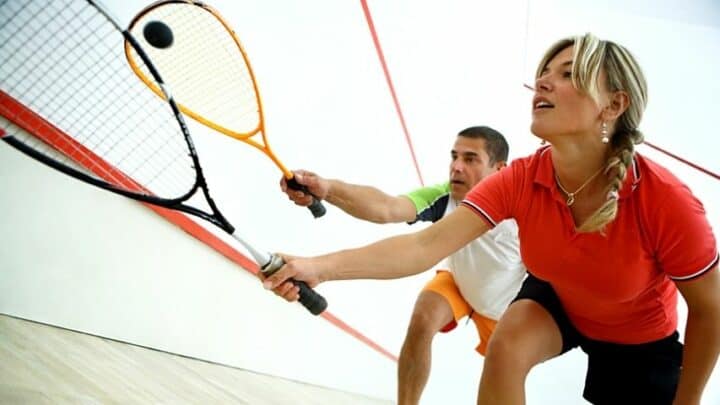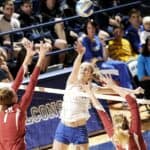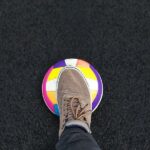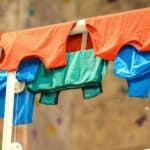Put two players, two rackets and one ball on a relatively small indoor court and someone is surely going to get in someone’s way.
Understanding how to avoid obstructing your opponent in squash is important so that you are not penalized for obstruction.
Table of Contents
What are the Obstruction Rules in Squash?
When a squash player gets in between their opponent and the ball before they can hit it, it is an obstruction. The obstruction can also be when the ball is prevented from hitting the front wall when it’s traveling to the side or back wall and a player gets in the way of their opponent’s next stroke.
Simplifying Obstruction Rules in Squash
Put simply, an obstruction occurs in squash when one player gets in the way of the other, or of the ball.
Think about it this way: there are two players on the court: player A and player B.
The aim is for player A to hit the ball so that it bounces off the front wall and then player B will return it.
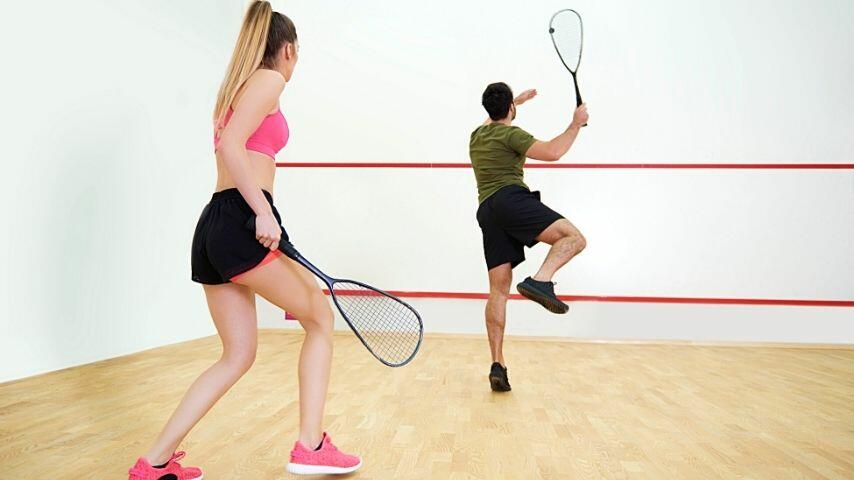
Player A in Squash hits the ball towards the front wall so that when it returns, player B will return it
The ball can bounce off the side wall before and/or after bouncing off the front wall. To get any type of point, though, the ball needs to touch the court’s front wall.
If the ball is prevented from reaching the front wall because it hits one of the players, or if a player cannot get to the ball because the other player is in the way, then an obstruction has occurred.
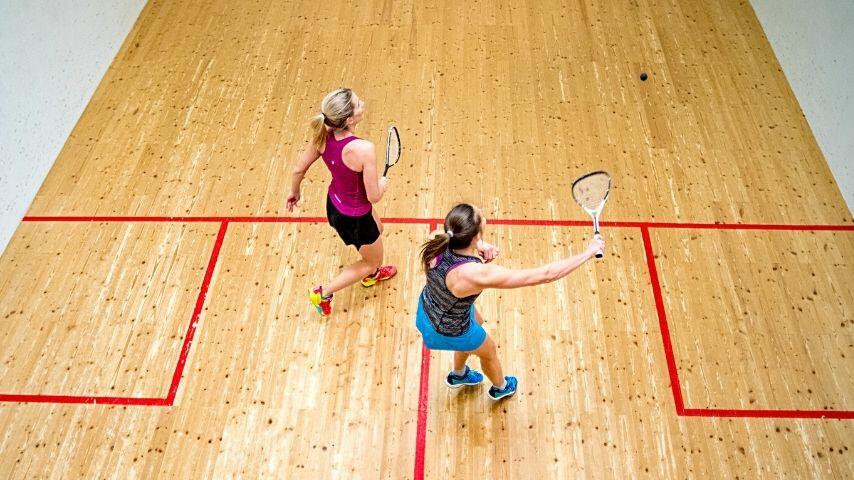
If one of the players can’t reach the ball in time because the other player is in the way, an obstruction occurs
For example: If player A hits the ball and player B gets in the way and the ball hits her before being able to make it to the wall, it is an obstruction.
Or, if player A hits the ball and it bounces off the front wall but then player A gets in the way of player B‘s hit to return the ball, it is an obstruction.
However, you need to consider whether the said obstruction is avoidable or not.
Was there any way player B could have avoided being in the path of the ball? Did player A make serious efforts to get out of player B’s way when they tried to return the ball?
Penalties for Obstruction
Obstruction on the squash court can be penalized either by a call of let, no let, or a stroke.
Let
If player B obstructs the ball accidentally and player A could reasonably have reached the ball, then a let is awarded.
This is also the most likely penalty if the ball is heading for the sidewall when the path is obstructed, or if the ball has already bounced off the sidewall.
No Let
A player may appeal an obstruction and ask for a let.
If they could not possibly have reached the ball to return it, then the obstruction made no difference to the result of the point and the let is not allowed.
Stroke
If the ball is stopped from reaching the wall by hitting the player who did not hit it, the penalty is a stroke.
If player A obstructs the ball and does not make any effort to get out of player B’s way and stops them from being able to take a shot, the penalty is a stroke being awarded to player A.
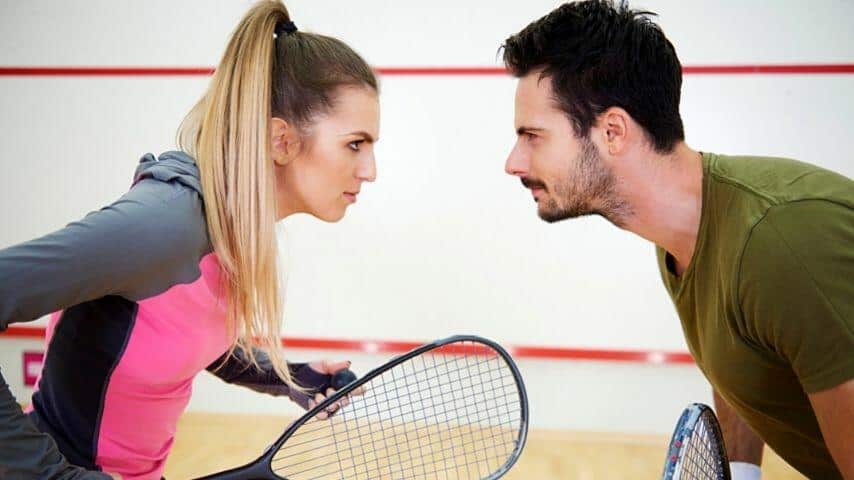
A stroke in Squash happens when player A deliberately obstructs the ball, preventing player B from getting to it
To Take into Consideration
Depending on where the ball was going and if it hit a wall at all, the penalty can be either a let or a point awarded.
If the ball was traveling directly to the wall when it hits the opponent, then it is a straight obstruction and the player who hit the ball is awarded a point.
However, if the ball was on its way to the sidewall before it hit the opponent, then a let may be awarded and the point retaken.
This is also usually the case if the ball hits the sidewall and then hits the opponent on the way to the front wall.
The Basics of Squash
Squash is quite a straightforward game. There are two players on an indoor court, with rackets and a ball, which is hit alternately by the players.
For each shot, the ball has to hit the front wall, but can also bounce off any other wall, either on its way to the front wall or before being returned by the second player.
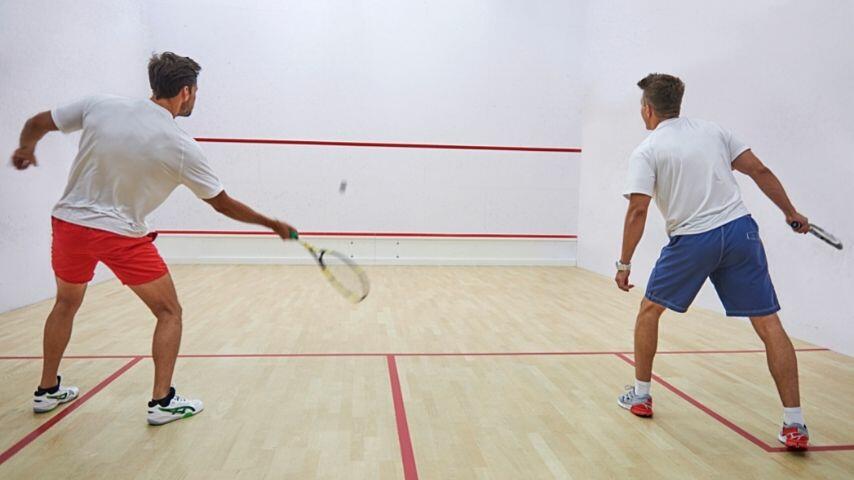
Squash is a game played by 2 players with rackets and a ball with the aim of hitting the ball alternately
Each player must have a reasonable chance to make a good stroke, which means that there should be nothing to obstruct them.
They should both do what they can to keep/get out of the way of their opponent so that obstruction does not occur.
Offenses on the Squash Court
After a squash player has hit the ball, they must make every effort to move out of the way of their opponent, so that they can have a reasonable chance at making a good stroke.
If the abovementioned rule of the game doesn’t happen, then an offense has been committed.
If the ball is hit by a squash player and hits their opponent before hitting the front wall, the run of the ball has been interrupted and the ball will die.
The player who hit the shot did not have any reasonable chance of hitting an effective shot, so the penalty is in their favor.
On the other hand, if a player tries to hit a ball, but their opponent gets in their way, their chance for a good shot has been obstructed.
Then the penalty is in the favor of the player about to take a shot.
Frequently Asked Questions about the Obstruction Rules in Squash
Is obstruction in squash always penalized by awarding a stroke?
A deliberate obstruction in squash, or one where the player does not make every effort to get out of their opponent’s way, will be penalized by a stroke being awarded to the other player. If the obstruction was accidental, then the penalty may be a let.
What happens if the ball is blocked from reaching the front wall in squash?
In squash, the ball has to hit the front wall for a stroke to be valid, or to score a point. If it is obstructed and cannot reach the front wall, then the player that obstructed it is penalized.
Conclusion
Obstruction in squash means that a player’s stroke runs into interference, usually in the form of their opponent.
There are different penalties for obstruction. All of these are based on the assumption that a player must have a reasonable chance to take a clear and efficient stroke at the ball.
If they don’t, then an obstruction has occurred.
